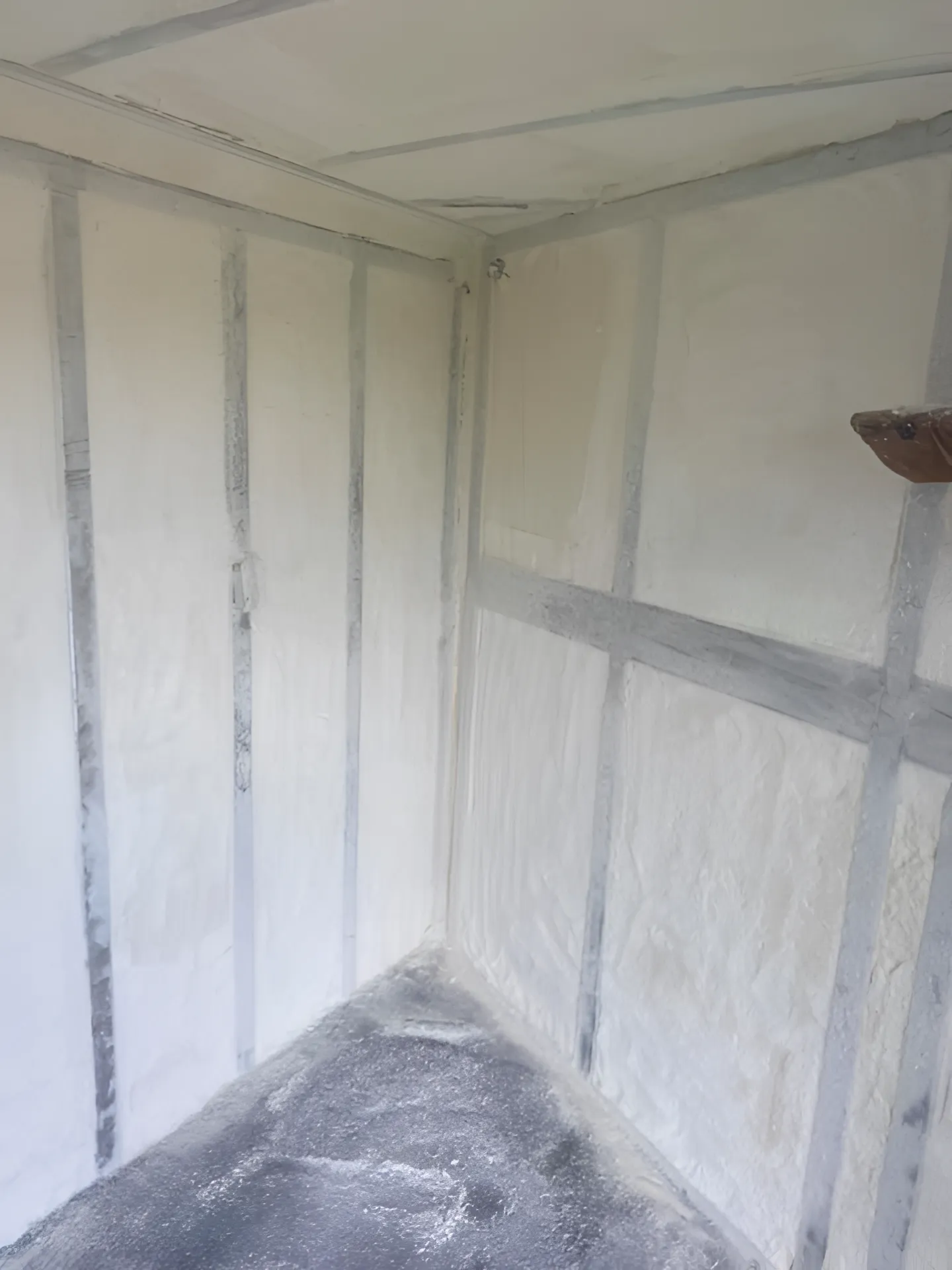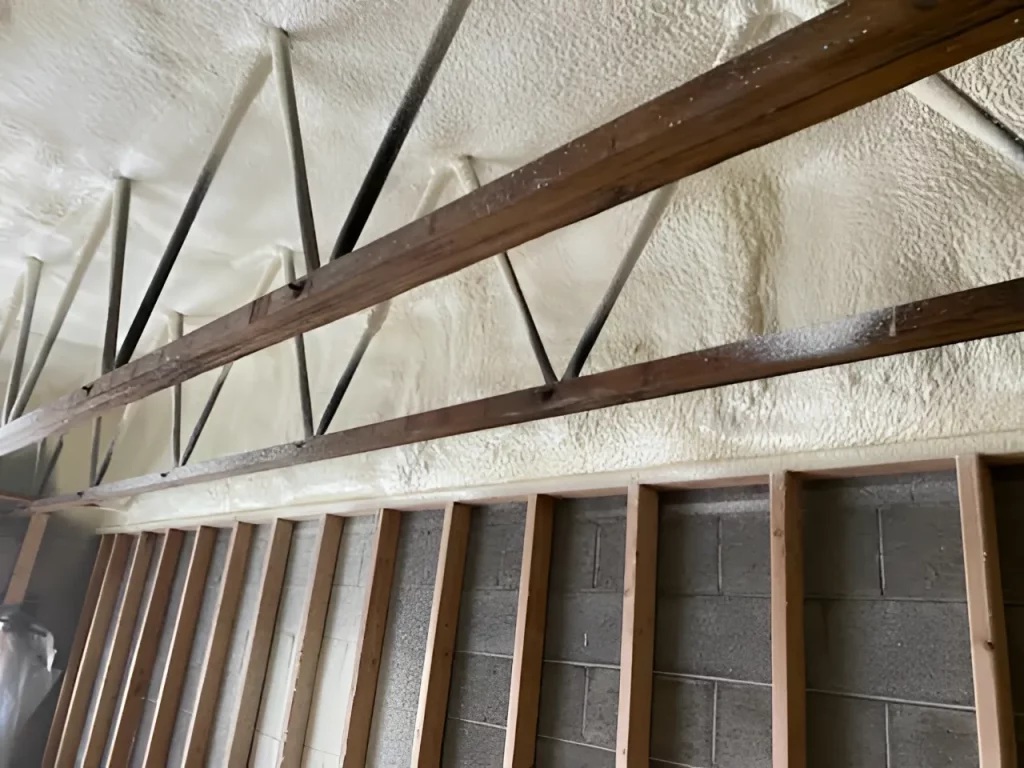
Yes, open-cell spray foam insulation can significantly help reduce allergy symptoms for many homeowners. By expanding to fill gaps, cracks, and crevices in walls and ceilings, it creates a highly effective air barrier. This seal drastically limits the infiltration of common outdoor allergens like pollen, dust, and other pollutants that trigger allergic reactions. The result is a more controlled indoor environment where the concentration of airborne irritants from the outside is much lower.
This article provides a detailed look at how open-cell spray foam works to improve indoor air quality, how it compares to other insulation materials, and what factors to consider before installation. The information is based on our years of practical experience installing insulation solutions and observing firsthand how a properly sealed building envelope contributes to a healthier living space.
The primary way open-cell spray foam combats allergens is by air sealing a home. Unlike traditional insulation like fiberglass batts, which can leave small gaps, spray foam forms a continuous, monolithic layer. This stops uncontrolled air leakage, which is a major pathway for allergens to enter a home.
When professionally installed, the foam adheres to almost any surface, creating a custom fit around plumbing, electrical wiring, and structural framing. This comprehensive seal offers several key benefits for allergy sufferers:
Bonus Tip: For the best results, combine spray foam insulation with a high quality HVAC filter. The foam will stop allergens from getting in through the building structure, and the filter will capture any particles that enter through doors and windows or are generated inside.
Not all insulation materials offer the same level of protection against allergens. The main difference comes down to how effectively each material can stop airflow. While materials like fiberglass have insulating properties, they don’t stop air movement nearly as well as spray foam.
| Feature | Open-Cell Spray Foam | Closed-Cell Spray Foam | Fiberglass Batts | Blown-In Cellulose |
|---|---|---|---|---|
| Air Seal | Excellent | Excellent | Poor | Fair |
| Moisture Resistance | Good (Vapor Permeable) | Excellent (Vapor Barrier) | Poor (Can trap moisture) | Fair (Treated) |
| Allergen Filtering | Excellent | Excellent | Poor | Fair |
| Sound Dampening | Excellent | Good | Fair | Good |
As the table shows, both types of spray foam excel at creating an air seal. Open-cell foam is often preferred for residential walls because its flexible nature accommodates the natural shifting of a building, and its sound-dampening qualities create a quieter indoor space.
Controlling allergens is just one part of maintaining good indoor air quality (IAQ). Modern, energy-efficient homes are built to be much tighter than older homes, which is great for utility bills but can sometimes trap indoor pollutants. The American Lung Association reports that people spend around 90% of their time indoors, where pollutant levels can often be higher than they are outside.
This makes it essential to manage the air inside your home proactively. A proper insulation strategy is the first line of defense. By sealing the structure with spray foam, you gain control over your home’s air. You can then use a ventilation system, like a heat recovery ventilator (HRV) or energy recovery ventilator (ERV), to bring in fresh, filtered air without wasting energy. This creates a complete system for a healthy home: seal it tight and ventilate it right.

While the benefits are clear, it is important to evaluate a few key factors to ensure spray foam insulation is the right fit for your home and health needs.
Because spray foam creates such a tight seal, your home’s ventilation becomes more important than ever. If your home doesn’t have a mechanical ventilation system, one may need to be installed. An energy audit can help determine your home’s current air exchange rate and whether additional ventilation is necessary to maintain healthy IAQ.
This is not a DIY project. The application of spray polyurethane foam involves complex chemical reactions and requires specialized equipment and training. A professional installer will ensure the foam is mixed and applied correctly for optimal performance and safety. They will also manage ventilation during the curing process to ensure any off-gassing is properly handled.
Look for spray foam products that are certified for low chemical emissions. Products with a GREENGUARD Gold Certification have been tested and shown to have low volatile organic compound (VOC) emissions, making them a better choice for indoor air quality. Always ask the installer what product they use and check its certifications.
Bonus Tip: Schedule the installation for a time when the home can be vacant for at least 24 hours. This allows the foam to cure fully and any initial odors to dissipate before your family returns.
Ultimately, open-cell spray foam is a highly effective solution for reducing the amount of outdoor allergens that enter your home. By creating a superior air seal, it helps improve indoor air quality and can lead to noticeable relief for allergy sufferers. However, it’s important to remember that this is an investment and part of a larger system for maintaining a healthy home. Before moving forward, assess your specific needs, your home’s existing ventilation, and your long-term goals for comfort and health.
Understanding how your home’s building envelope affects your indoor air quality is the first step toward a solution. For a professional evaluation and to see if spray foam insulation is right for you, contact High Country Solutions. You can reach the team by phone at (307) 248-9063 or by email at [email protected] to discuss your project.
The air-sealing benefits are immediate. As soon as the foam is installed and cured, it begins preventing the infiltration of outdoor allergens. Most people notice an improvement in indoor air quality within a few days.
It may not eliminate the need entirely, but it can significantly reduce the workload on an air purifier. The foam stops allergens from entering through the building envelope, while a purifier handles particles already inside or those that come in through doors and windows.
Indirectly, yes. While it won’t affect the dander produced by pets inside the home, it contributes to a less drafty, more comfortable environment with more stable humidity levels. This can make the home’s air less irritating overall. A high-quality HVAC filter remains the best tool for capturing airborne pet dander.
Both provide an excellent air seal, which is the key to stopping outdoor allergens. Closed-cell foam is also a vapor barrier, making it ideal for areas where moisture is a major concern, like basements. For general living areas, open-cell foam’s ability to breathe and its superior sound-dampening qualities are often preferred.